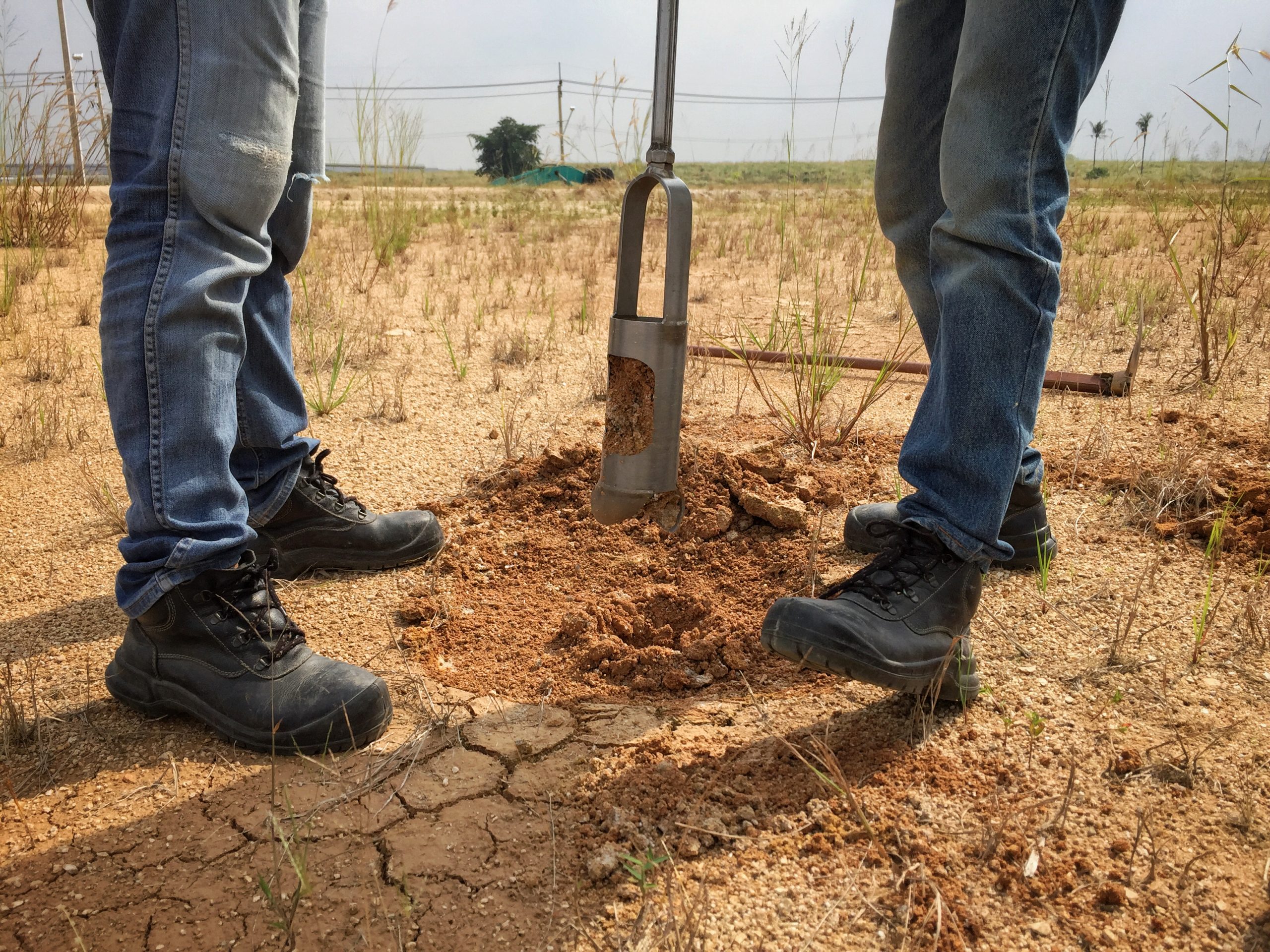If you have a passion for the environment? Do you have the innovative problem-solving skills of an engineer? You may want to pursue a career in environmental engineering. Deciding on a subject of study is a major decision, but just as important is deciding on the path you will take to reach your goals. To know how to become an environmental engineer, you must first determine:
- the level of education that makes the most sense for you
- what to look for in a college degree program
- what to do after graduation
Below is useful information that will help you realize your dream of becoming an environmental engineer.
Earning a Degree
The first step to becoming an environmental engineer is earning a bachelor’s degree. In the course of their daily work, environmental engineers must draw on a rich educational background that combines engineering principles and practices with sciences like biology and chemistry. They’re also familiar with niche areas of study like soil science.
Because environmental engineers need a variety of specialized knowledge and skills, you should look for a program of study that focuses narrowly on environmental engineering.
One way to ensure that your chosen program will prepare you for a future in environmental engineering is to make sure that it is accredited. The Accreditation Board for Engineering and Technology, (ABET) currently accredits 91 bachelor’s degree programs in environmental engineering throughout the United States. To become accredited, a program must employ licensed professional engineers with certification or experience in environmental engineering. The curriculum of an ABET-accredited program will include studies in:
- mathematics, including statistics and calculus-based physics
- earth and biological sciences
- fluid mechanics
- concepts of chemistry, such as kinetics and stoichiometry
Coursework and laboratory projects help students to understand the concepts and applications of:
- energy balances
- life-cycles
- the environmental impact of various factors
- the phases of water, soil and air
Gaining Experience and a License
A degree is necessary to begin a career in environmental engineering. But it’s only the first step in a longer process. Upon graduation, aspiring engineers must pass the Fundamentals of Engineering examination to officially become engineers-in-training. Then you complete sufficient work experience, as required by the state in which you intend to work. Then, as an engineer intern, you can take the Professional Engineering examination and apply for a license. At this time, you may also decide to earn a master’s degree in environmental engineering, especially if you want to advance to management positions later in your career.
Some accredited colleges and universities offer five-year engineering programs that lead to both a bachelor’s and master’s degree in environmental engineering. These programs are fast-paced, rigorous, and highly competitive. However, by earning a master’s degree, more career choices are open to you. In fact, individuals with a master’s in environmental engineering may pursue faculty positions or research and development roles in colleges and universities. Some employers, especially those hiring for management positions, prefer candidates with a master’s degree.
The path to becoming an environmental engineer is challenging, requiring studies in numerous disciplines of science and engineering. You must also pass two professional examinations. However, engineering as a whole is a lucrative field. Below, we discuss the earnings potential and job outlook for environmental engineers, which we hope will help in your research on how to become an environmental engineer.
Earnings Potential for Environmental Engineers
The Bureau of Labor Statistics (BLS) reports that the median annual wage for environmental engineers is $92,120. The lowest 10% earn less than $55,500. The highest 10% earn more than $144,000 annually. The median wage for environmental engineers is considerably higher than the average for all occupations, according to BLS. In fact, the overall average wage is $41,950 for all occupations. In the search on how to become an environmental engineer, it’s important to factor in one’s earnings potential.
There are certain factors that impact earnings for this occupation. First, it matters which industry you choose to work in. Certain industries pay higher wages for environmental engineers. BLS reports five top-paying industries for this occupation.
Environmental engineers see the highest wages in federal government. This industry excludes the postal service, but it includes all other federal government agencies. Environmental engineers working for the federal government earn a median annual wage of $110,250, about $18,000 more than the average annual wage for this occupation.
The second-highest-paying industry for environmental engineers is engineering services. In this industry, environmental engineers see average earnings of $93,000. This number is slightly higher than the average for all environmental engineering workers.
Three more industries that pay strong wages for environmental engineers include:
- local government
- management, scientific, and technical consulting services
- state government
In these three industries, earnings are less than the average pay for this occupation. Local government environmental engineers (excluding education and hospitals) see median annual wages of $88,180. Management and technical consulting services offer a median annual wage of $87,920. In state government, environmental engineers can expect a median annual wage of $82,990.
While industry type impacts earnings of environmental engineers, so does geographic location. Certain states and cities pay higher wages for environmental engineers. According to the Occupational Employment and Wage Statistics data published by BLS, there are five top-paying states for environmental engineers. These states include:
- Idaho
- California
- Washington
- Texas
- Minnesota
In Idaho, the highest-paying state for this occupation, environmental engineers see annual mean wages of $110,690. The mean annual wage of environmental engineers in California is $109,380. The remaining highest-paying states offer annual mean wages of:
- $108,290 (Washington)
- $108,270 (Texas)
- $107,430 (Minnesota)
All five states offer higher-than-average earnings for environmental engineers.
BLS also reports certain metropolitan areas that offer higher-than-average annual wages for environmental engineers. According to the latest published data, Beaumont and Port Arthur, Texas is the highest-paying metropolitan area for environmental engineers. In this metro area of Texas, environmental engineers see annual mean wages of $128,000. Other high-paying metro areas include:
- San Francisco, Oakland, and Hayward, California
- Baton Rouge, Louisiana
Job Outlook for an Environmental Engineer
According to the BLS, the employment growth for engineers, as a whole, is projected to be seven percent through 2030. Unfortunately, the job outlook for environmental engineers is anticipated to be slightly slower than the average. In fact, BLS reports the projected growth for environmental engineers to be four percent.
Despite the limited growth for environmental engineers, about 4,000 job openings for this occupation are projected each year over the next 10 years. The number is favorable, especially for those graduating from ABET-accredited engineering programs. Job openings are expected to result from the growing need to replace engineers who transfer to different roles and occupations or exit the labor force through retirement.
The projected employment growth means that job openings will be limited. As a result, competition for these openings will be fierce. According to BLS, acquiring niche engineering skills in the environmental engineering discipline will help improve job prospects. BLS reports that state and local governments are showing growing concerns over water. The concerns are increasing efforts to improve efficiency of water use. As a result, much of the employment growth for environmental engineers will be in professional, scientific, and technical services, as state and local governments increase their efforts to address water efficiency issues. Having a strong skillset in water efficiency will make you stand out as a candidate for jobs.
Growth for environmental engineers isn’t only expected at the state and local levels. The federal government has pushed efforts to clean up contaminated sites that will require hiring environmental engineers. Wastewater treatment will also become a concern in areas where large quantities of water are used during the drilling for shale gas.
Utility companies and water treatment plants will continue to employ environmental engineers over the next decade. As new emissions regulations are met and old regulations are followed, environmental engineers will be needed.
According to BLS, about 52,300 jobs in 2020 were held by environmental engineers. Of this number, five industries stood out as the largest employers for this occupation. BLS reports that the largest employer for environmental engineers is the engineering services industry. Engineering services employs 27 percent of all environmental engineers. Management, scientific, and technical consulting services employs 19 percent of environmental engineers, making it the second-largest industry for this occupation. The remaining three top employers include:
- state government (13 percent)
- local government (seven percent)
- federal government (six percent)
All government employers exclude education and hospitals.
Other Important Qualities to Have
There are certain qualities that make an individual successful environmental engineer. Some of these qualities can be honed in the classroom, while others are considered soft skills. Soft skills are personal attributes, characteristics, and traits employers like. They complement hard skills in the workplace. They enable people to interact harmoniously with others. Below are several important qualities that help make an environmental engineer a strong asset to the team.
Innovation and Imagination: Being creative, innovative, and imaginative helps environmental engineers design systems that will be part of larger ones. This specialized engineer must foresee how proposed designs will work with the larger systems. They see far beyond the tasks at hand. They focus on how equipment, machinery, and workers will interact in a larger, more expansive system.
Interpersonal skills: Most environmental engineers work with teams toward a common goal. They work alongside fellow engineers. They also routinely interact with:
- mechanics
- scientists
- technicians
The entire team helps put designs into practice. As a result, having strong interpersonal skills helps the team run and operate smoothly.
Problem-solving skills: Environmental engineers solve problems. They identify, anticipate, and strive to solve issues and challenges that arise with each project. They work hard to mitigate environmental damage and safeguard their team’s health. As a result of the requirements of the job, problem-solving skills are essential to the role.
Reading skills: Environmental engineers read documents that often deal with topics outside the field of environmental engineering. They work with business professionals and lawyers. They must understand the information provided even when the topics are beyond their scope of training. Strong reading skills help an environmental engineer stay on top of the job.
Writing skills: Plans, proposals, specifications, and research findings must be Written documents must be drafted, rewritten, and communicated by environmental engineers. These include:
- Plans
- proposals
- specifications
- research findings
These must be written clearly and effectively so that anyone–even those without an environmental engineering background–can understand is critical to this occupation.
Career Advancement for Environmental Engineers
A graduate degree in environmental engineering will make you a strong candidate for advancement, but as a new engineer, you must be open and receptive to extensive training. Beginning engineers gain knowledge and experience while on the job. They work alongside senior engineers and receive hands-on training. A beginning engineer will be assigned a project to complete. The project will be completed as directed and assessed by a senior engineer.
Once a project is completed to satisfaction, the beginning engineer moves on to more difficult and challenging projects. In doing so, the engineer gains greater independence to:
- develop designs
- make decisions
- solve bigger problems
With enough experience and training, the engineer may advance to become a technical specialist or assume a role as a supervisor for a team of engineers and technicians.
To move into a management role, such as that of an engineering manager or program manager, an environmental engineer often works under the tutelage of a more experienced engineer. Newer engineers gain valuable leadership experience as they oversee projects and teams while working closely with a senior-level engineer or executive.
Eventually, if the beginning engineer proves to be a valuable leader, they can assume the role of project manager.
Related Resources:
- 5 Study Tips for Engineering Students
- 20 Best Affordable Online Bachelor’s in Electrical Engineering
- 30 Best Online Engineering Degrees 2022
- 30 Great Small Colleges for STEM Degrees 2022
- Top 30 Affordable Online Bachelor’s in Computer Engineering Degrees
- Ultimate Guide to Science and Engineering Degrees and Careers




